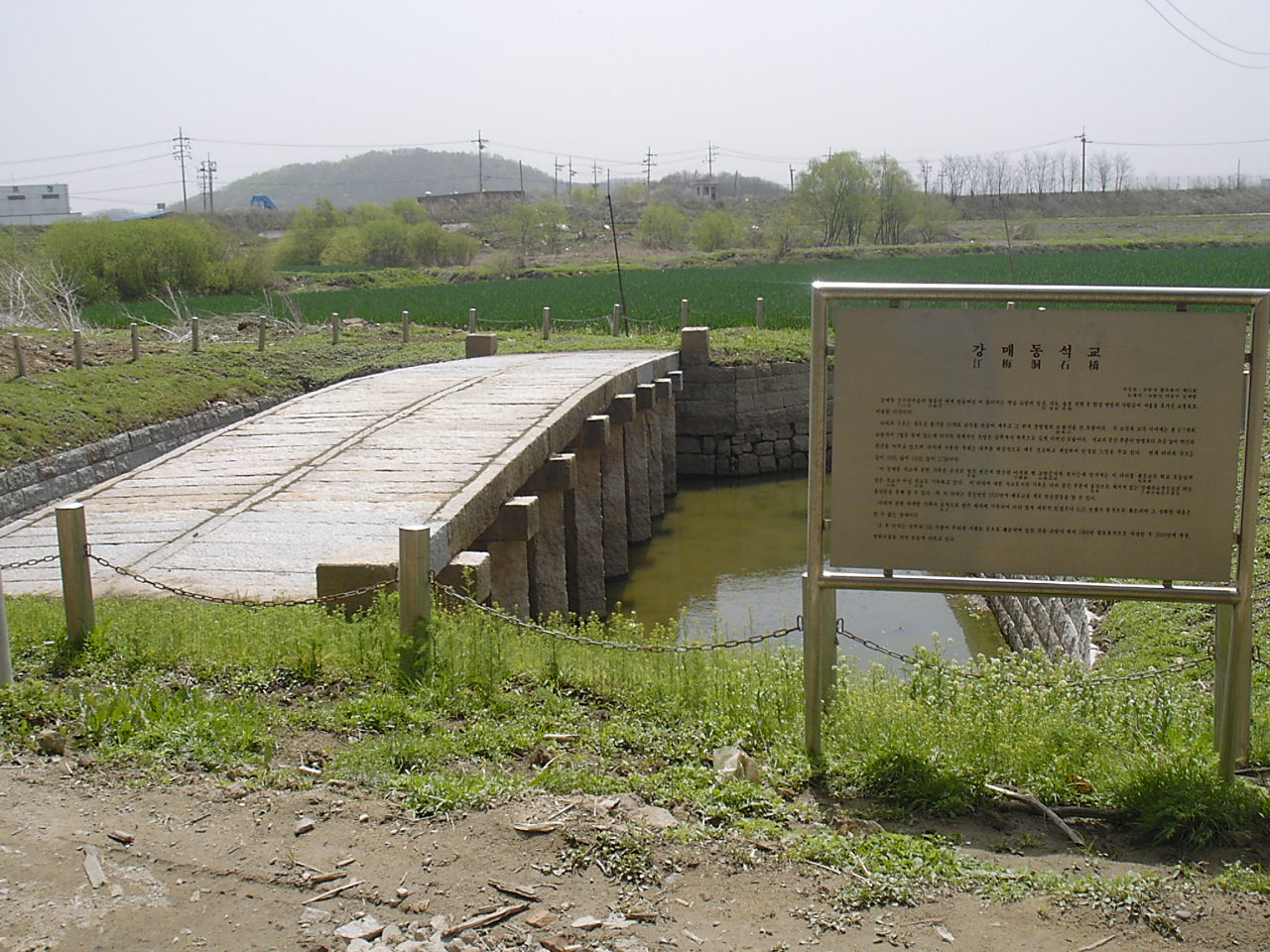Cultural heritage in Goyang
five-thousand years history
Current story of Goyang
2017-03-20
Transportation path towards Seoul, Stone bridge in Gangmae-dong


There is Gangmae Station of Gyeongui Line to the end of the east at Haengshin district that was developed as a new city. To the south of Gangmae Station, there is a way to the direction of Bongdae Mountain. There is bank if you enter the lower area of Bongdae Mountain. If you go about 50m along the un-paved road to the opposite direction of Hangju Fortress on top of this bank, there is a bridge. This is the stone bridge at Gangmae-dong. This has been a bridge used as a tranporttation path for people from the west to go to Seoul at Han River including Ilsan, Jido, and Songpog of Goyang in the past. The basic structure of the bridge is that the frame was built with 18 stone pillars with rectangle Gopanseoks on top of them. There are two rows of Gyopanseoks with 6-7 stones between the piers. As for overall image of the bridge, the bridge is connected from the South to the North. Due to the middle part that is higher than the both sides, it is in a shape of curve. According to [Goyang-gun Log] issued in 1755 on annals in Youngjo, it was called as Haepo bridge in the past. It was also known to be made with woods. Records as a stone bridge are that it was 江梅里橋 庚申新造 enscribed on the side of a bridge. This shows that the bridge was constructed in the 1920s. Stone bridge in Gangmae-dong is accessible through Soman village in Haengshin-dong and Ganggosan village at Gangmae-dong. Bridge is well preserved with original shape in the Joseon Dynasty. Seeing as how it is the one and only traditional bridge, it is valuable as cultural asset.